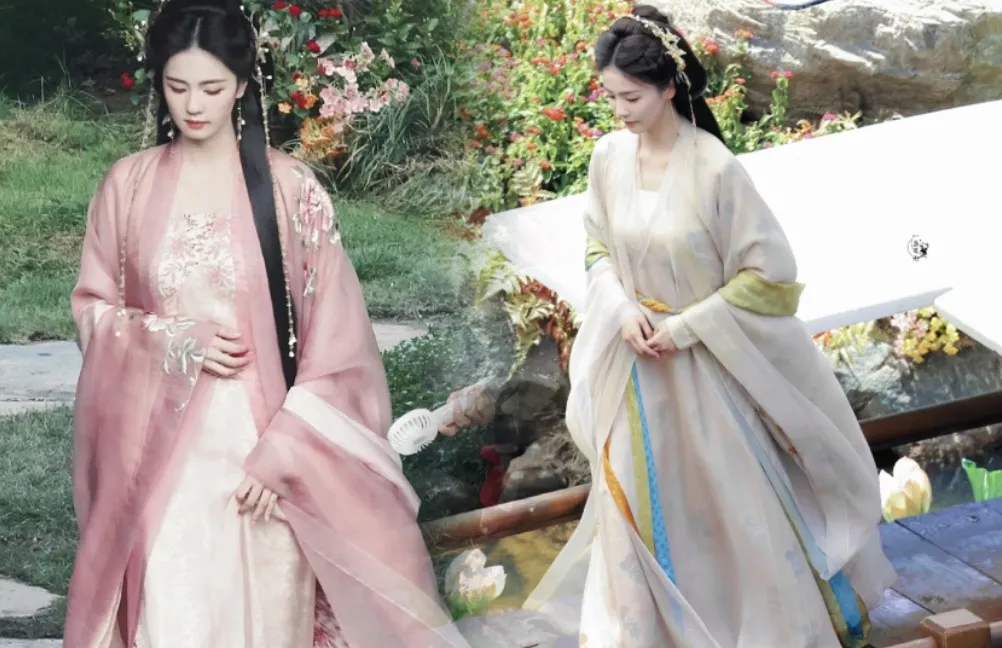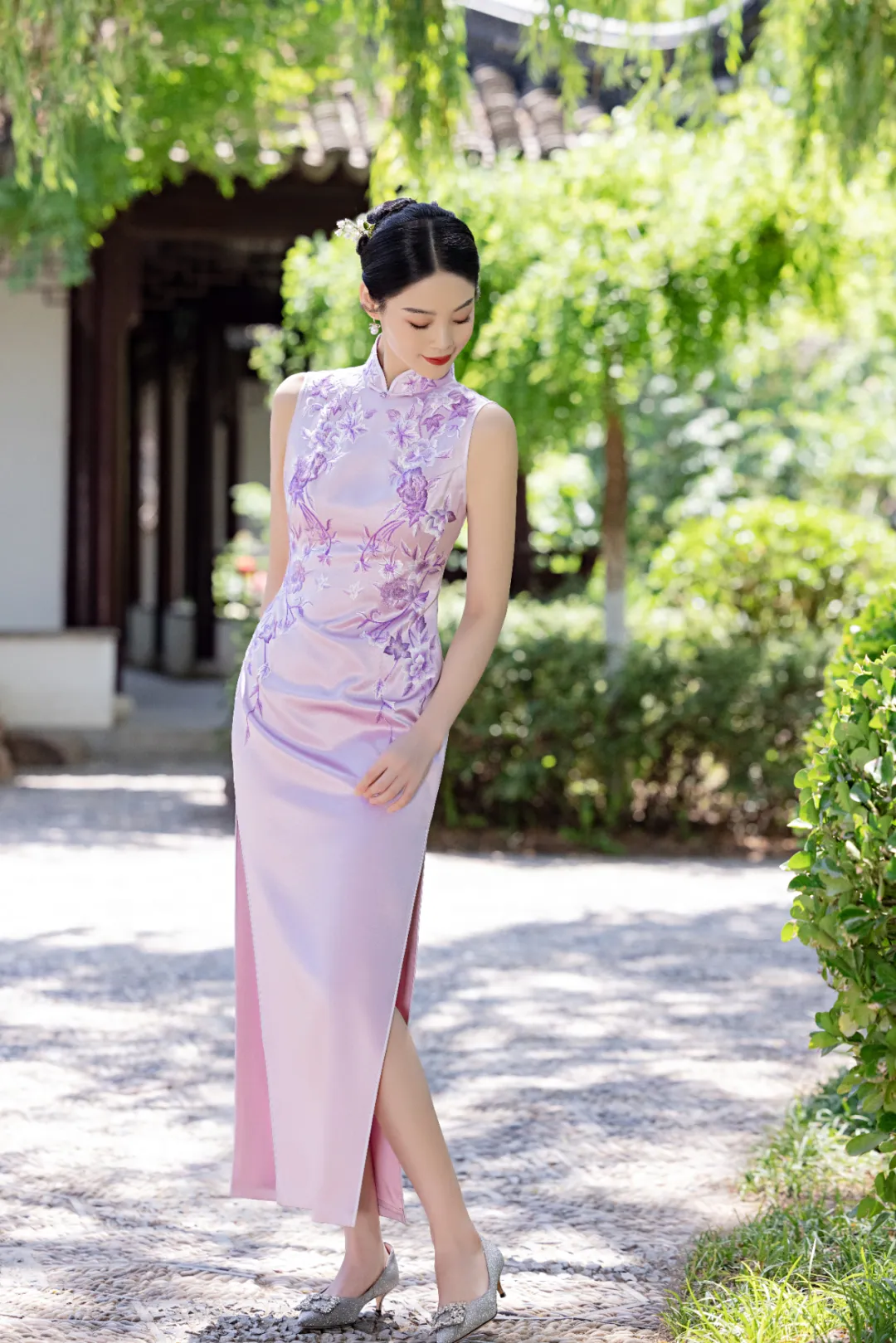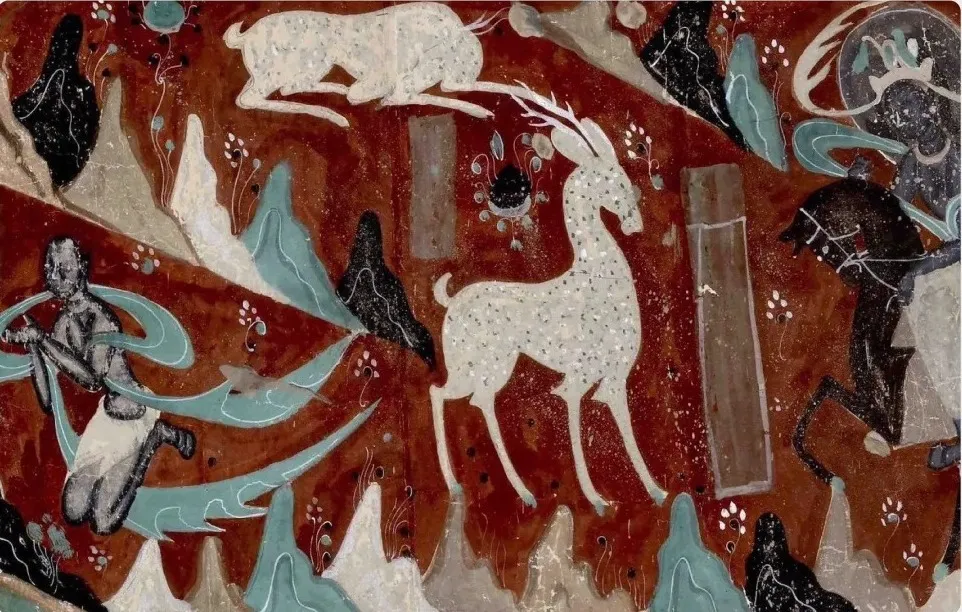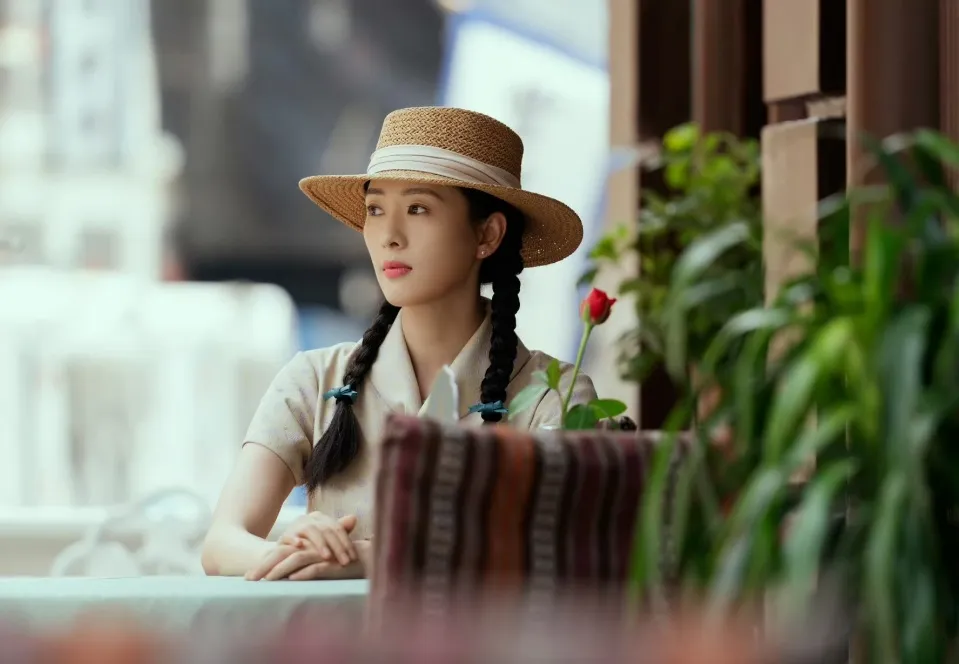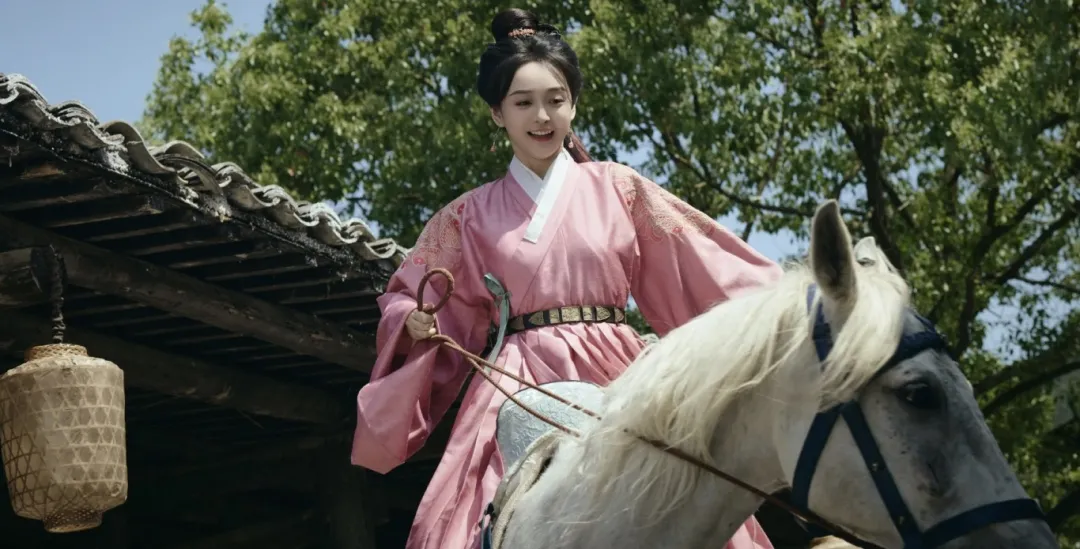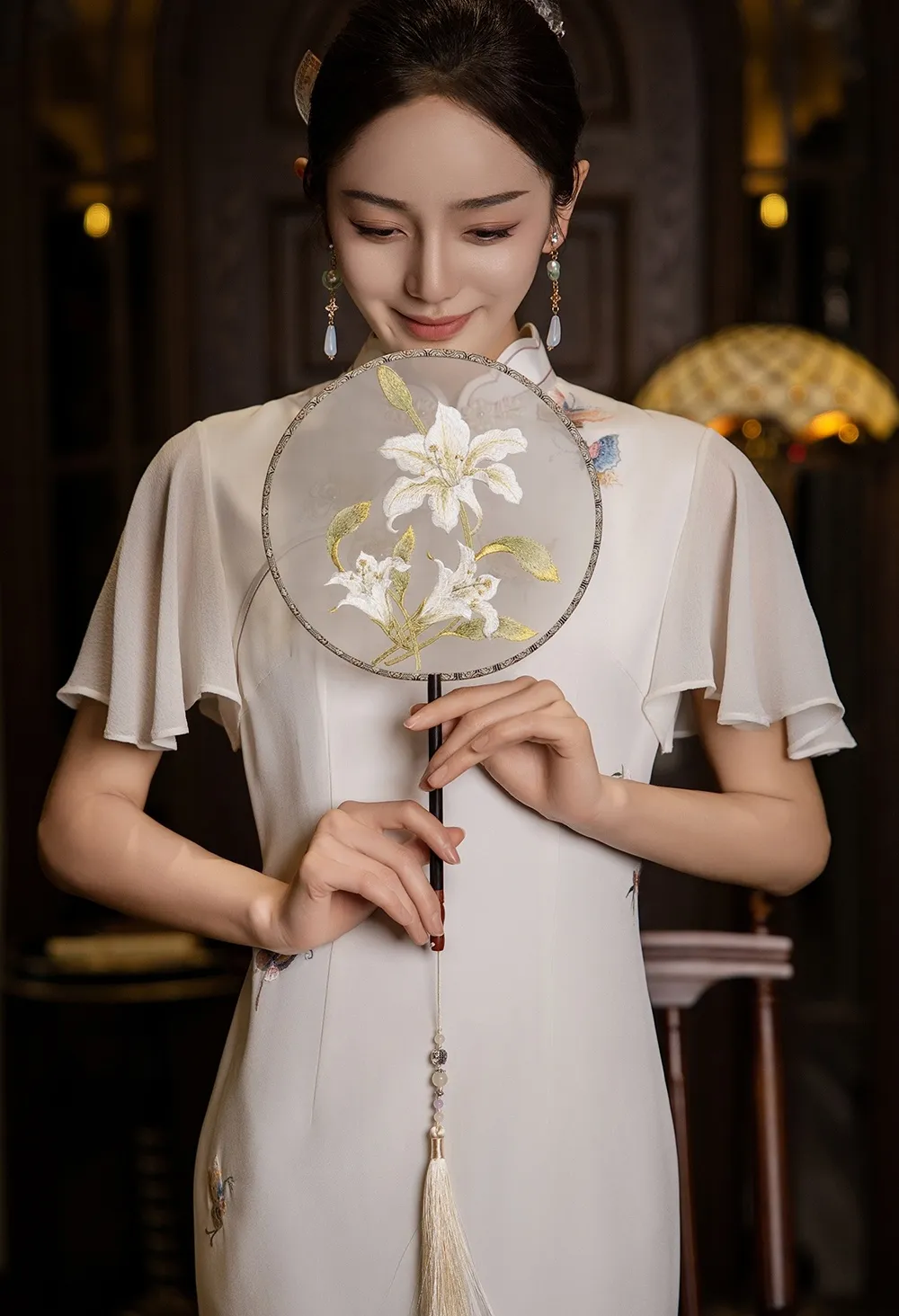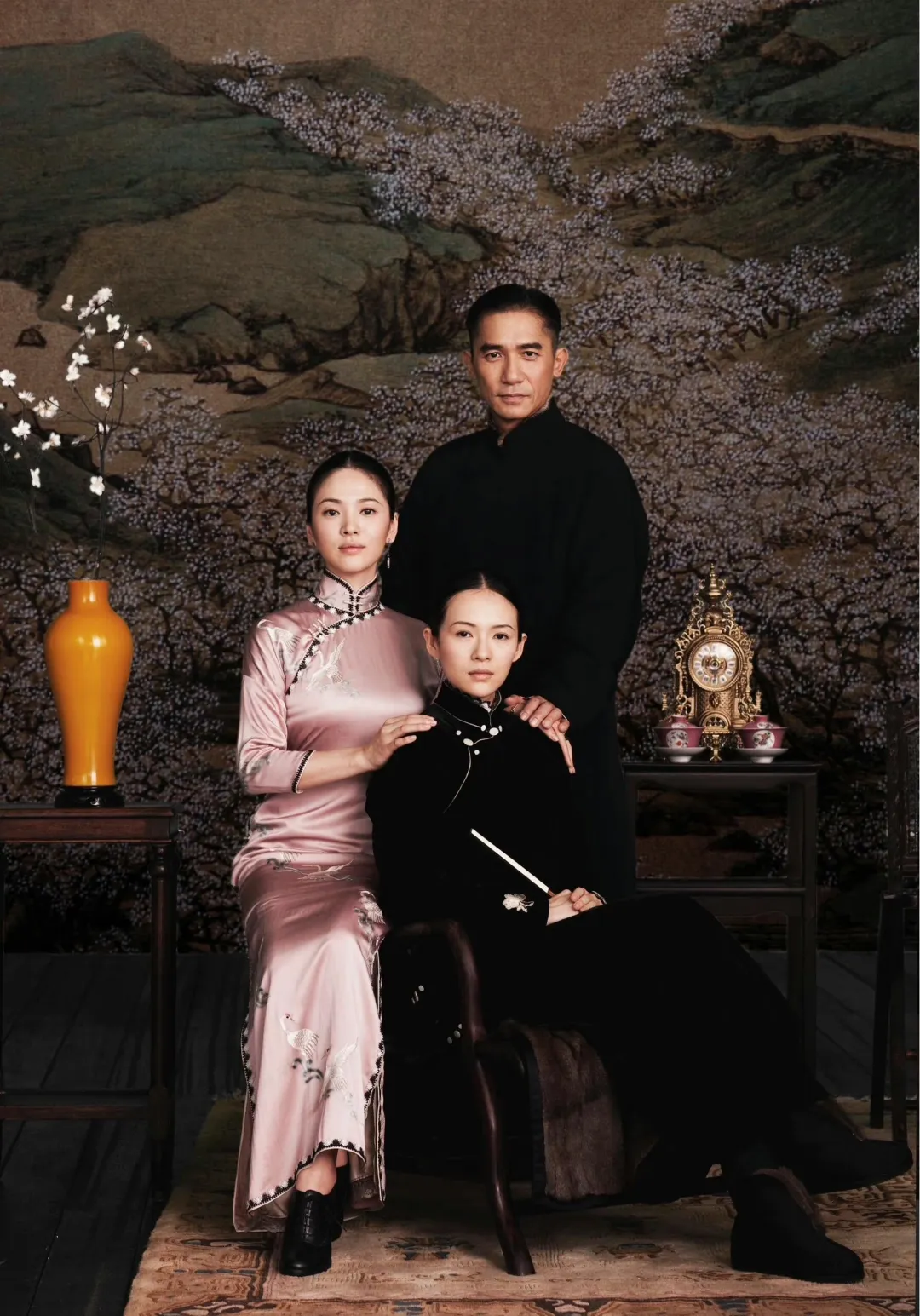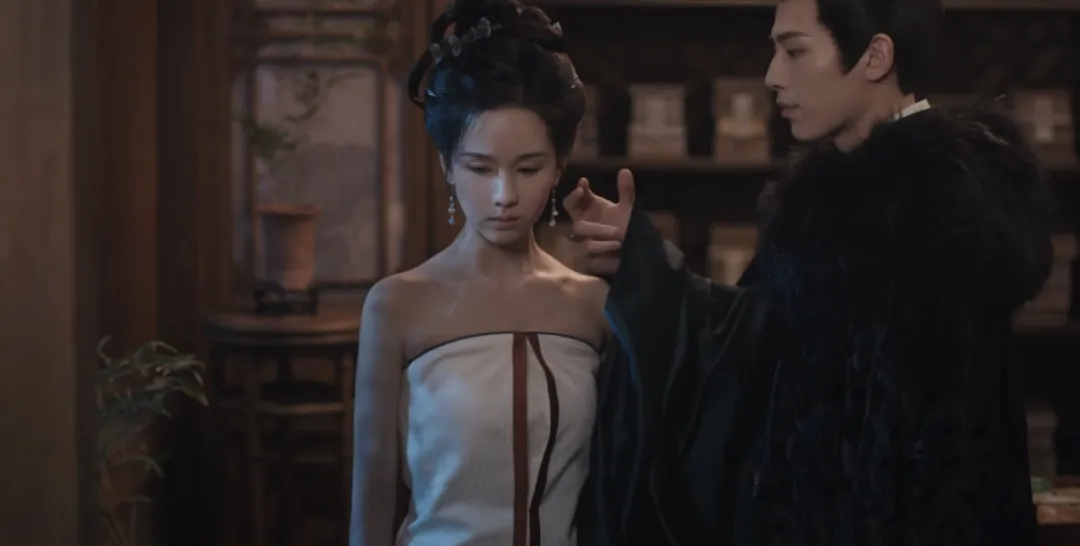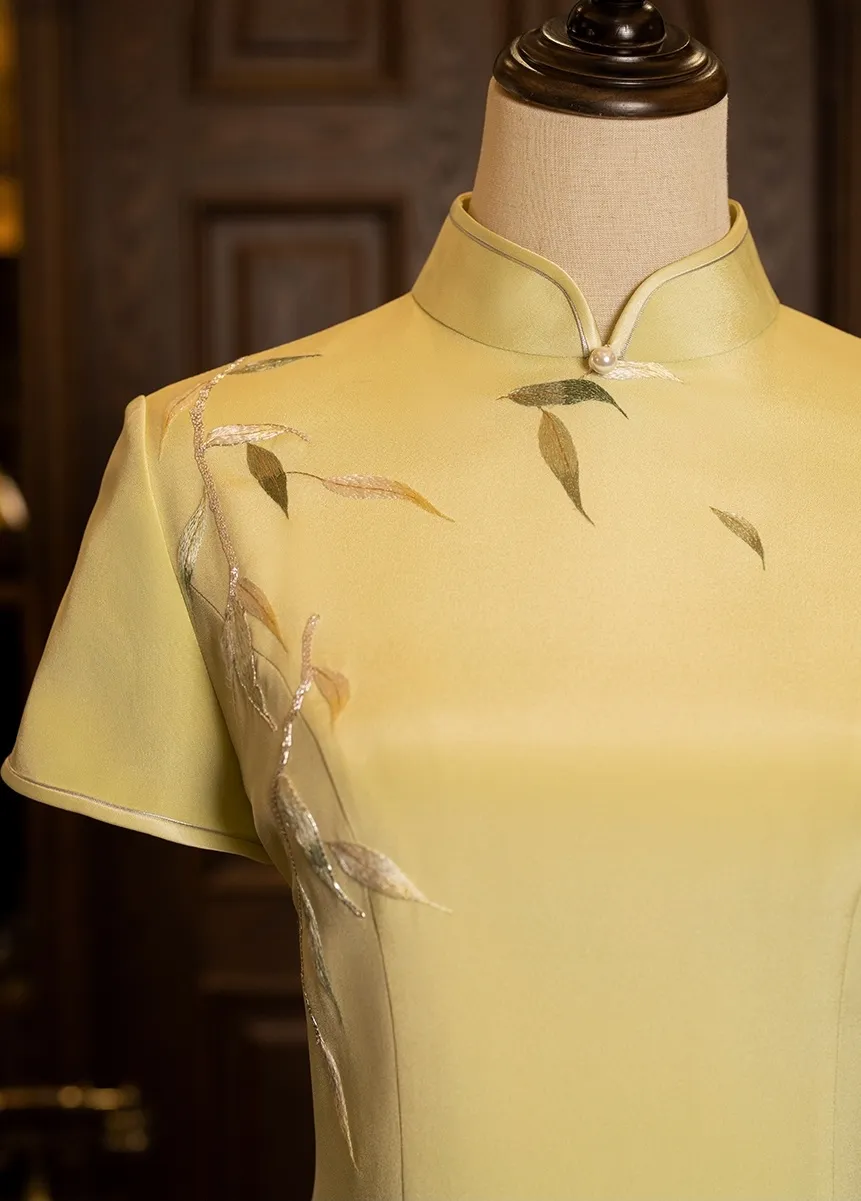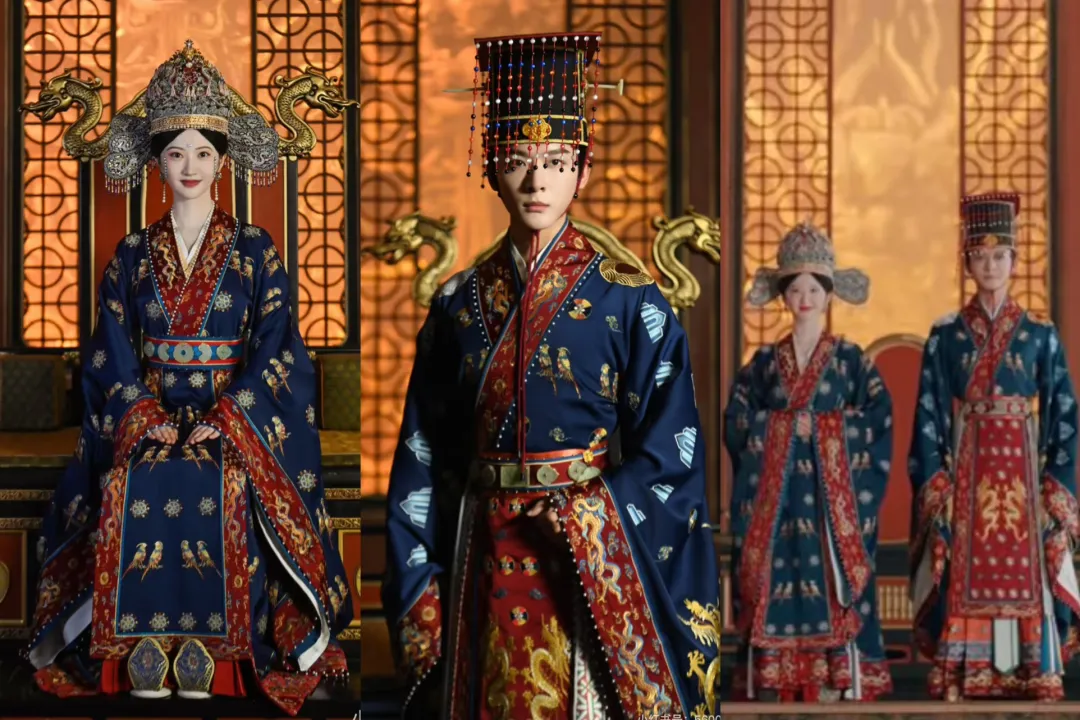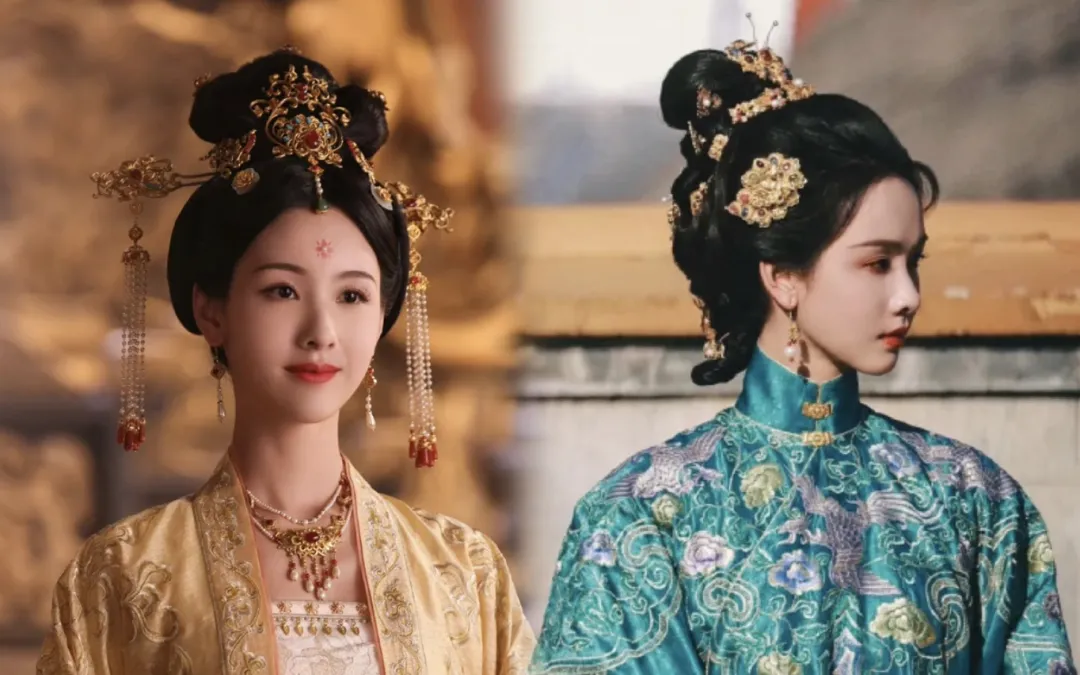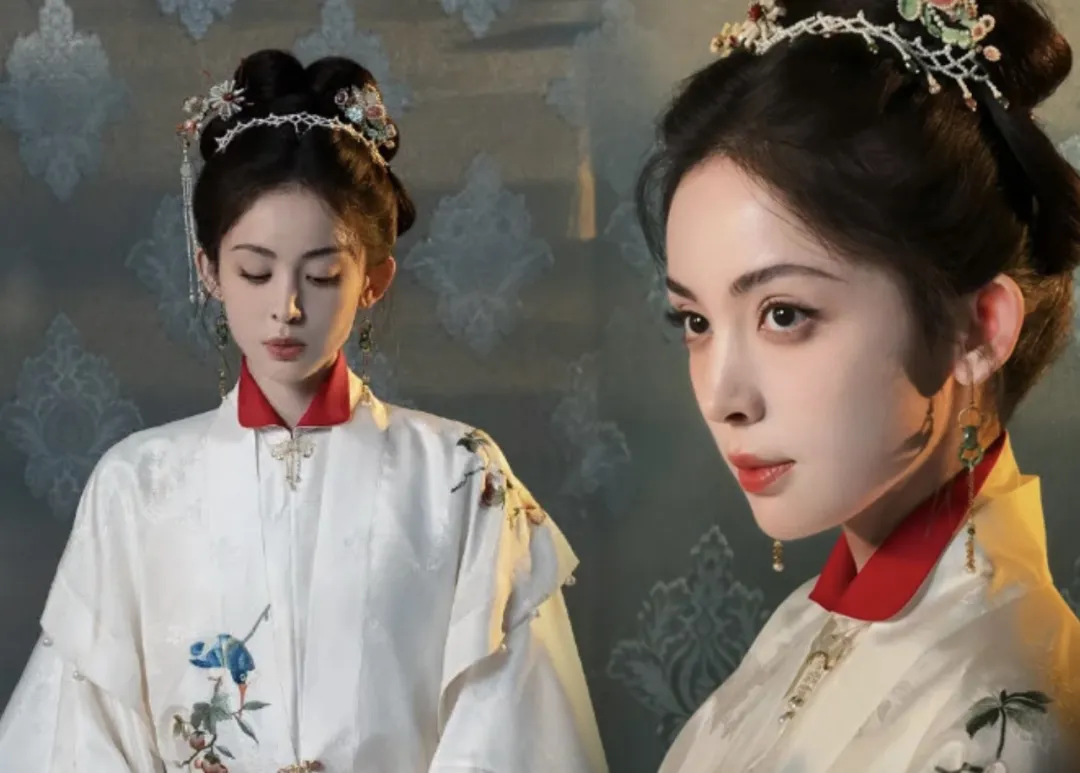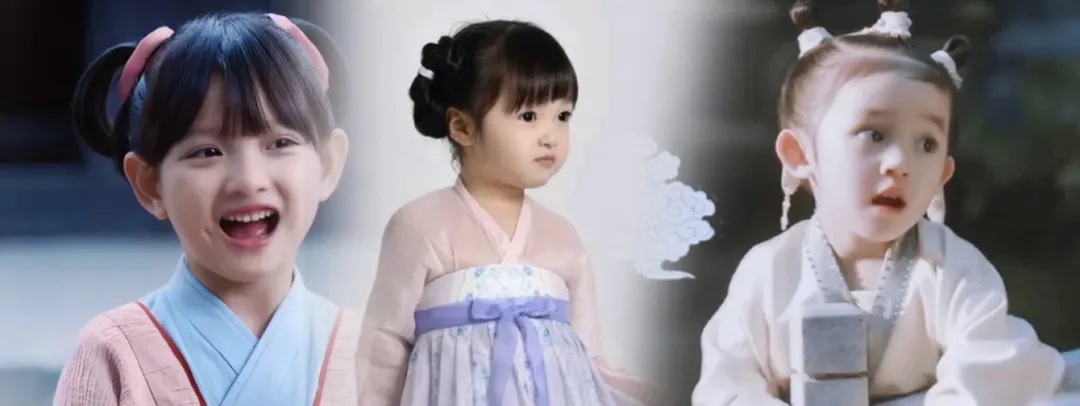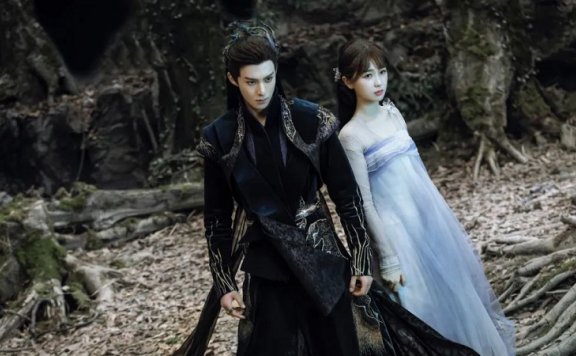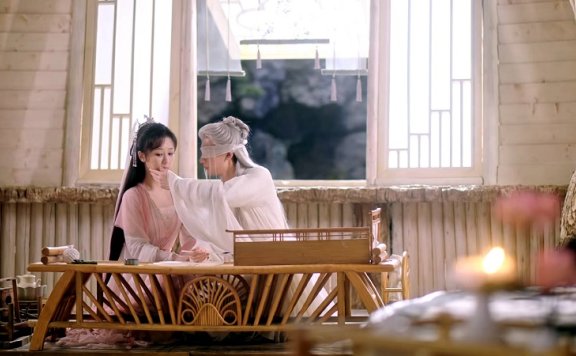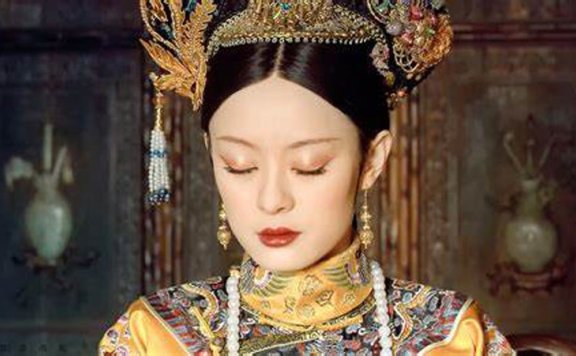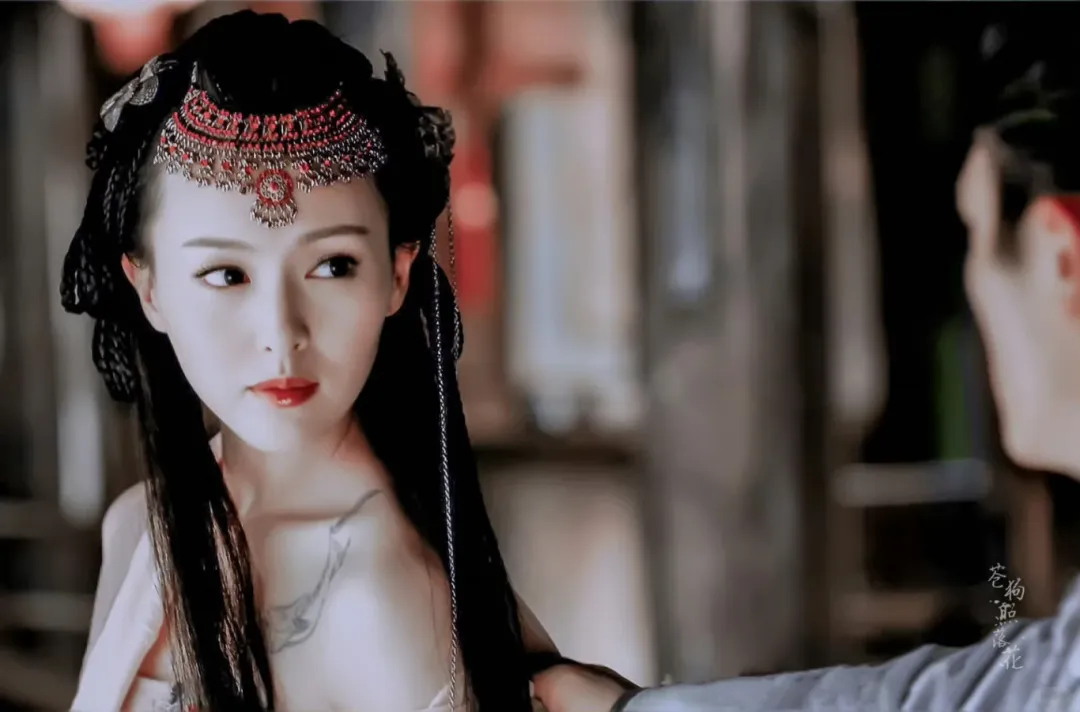Article
搜索结果:
-
Why Are the Sleeves So Big in Cdramas
Sometimes, it feels awkward to see characters in TV dramas wearing large - sleeved outfits for outings, meals, dates, fights, or even sleeping. Were ancient clothes really all about big sleeves? How inconvenient would it be to use the restroom? Are historical drama sleeves getting even larger these days? One netizen joked: 'So big you could fit a person inside!' Let's get straight to the point. While we often describe Hanfu as 'wide robes and large sleeves', it's important to note that this is a characteristic of formal Hanfu, used to show the wearer's social status, like the historical Dashu Shan (大袖衫) or Gongfu (公服). People rarely wore such exaggerated sleeves outside ceremonial occasions. Let's break down Hanfu sleeve styles. There are many suitable for daily life. Narrow sleeves are practical for labor or martial arts; Chuihu sleeves (垂胡袖), Pipa sleeves (琵琶袖), and straight sleeves are for non - labor daily wear; short sleeves can be casual outer layers or summer homewear. For example, the Quju (曲裾) and Zhiju (直裾) unlined gauze robes, common in the Western Han Dynasty, had sleeve openings around 29 cm wide. Modern fashion sleeves average 10 cm, with looser ones at 15 cm. So, 30… -
The Beauty of Cheongsam Skirts in the Wind
When the wind blows the hem of the cheongsam, the swaying figure is truly beautiful. Today, I'd like to talk about the cheongsam skirt, that is, the skirt style of the cheongsam. Why this detail? Because when we choose a cheongsam, we must pay special attention to it. Selecting a skirt that suits us, looks good, and has a strong modifying effect is the key to choosing a cheongsam. When choosing a skirt, options like A-line, wide swing, fishtail, straight tube, and various lengths can be dizzying. So today, I'll discuss the different styles of cheongsam skirts, their characteristics, and which body types they suit. Straight Skirt The straight skirt is the most common basic style in cheongsam patterns. It features a straight-up-and-down design. The H-shaped vertical effect makes the skirt fall straight and neatly, making the cheongsam look extra long, upright, and slender. This is why most people choose straight-skirt cheongsams. It suits all body types, has a daily style, and can be worn on various occasions, with a natural sense of dignity. There are usually three lengths for straight skirts. The first reaches the calf. This length is more convenient and daily, with less of the cheongsam's charm… -
When Qipao Meets the Magnificent Chinese Green
The encounter between Qipao and the magnificent Chinese green creates unforgettable masterpieces. Green symbolizes the vastest and most touching freedom on earth. As writer Li Juan once said, 'When we see green, we always think: nothing will ever end, right?' This interpretation, though not as romantic or unique as others, perfectly captures the essence of green—its freshness and vitality that bring hope and life from spring to summer. It's no wonder so many people adore and continuously fall in love with green. This love has persisted since ancient times. Starting from the Han Dynasty, influenced by Taoist and Confucian philosophies, green became widely popular in both culture and aesthetics, admired for its natural and serene beauty. Beyond clothing, green was also prominently used in architecture, as recorded in Zhang Heng's 'Ode to the Western Capital.' In ancient Chinese art, green flourished in paintings, particularly in the Dunhuang Mogao Caves during the Wei, Jin, and Southern and Northern Dynasties. The harmonious blend of green with colors like earthy red, lapis lazuli blue, and black showcased its elegant and rich beauty. By the Tang and Song Dynasties, green became a staple in landscape paintings, symbolizing the vibrant life and artistic refinement of… -
Cheongsam Can Be Glamorous and Intellectual
The encounter between the scents of gardenia and jasmine promises an unforgettable beginning. Today, we continue our review of cheongsam styles from films and TV shows, focusing on the 2021 Republican - era spy drama The Rebel. This series stood out not only for its stellar cast, including Zhu Yilong, Wang Yang, Tong Yao, Wang Zhiwen, and Zhu Zhu, but also for its nuanced portrayal of faith, humanity, and personal fate against the backdrop of a turbulent era. Zhu Yilong's performance earned him a nomination for Best Actor at the 2023 Magnolia Awards. The show excels in its authenticity and depth, much like the fleeting 'Sanxing Brand' toothpaste ad in the background—a subtle nod to the era's anti - foreign product movement led by industrialist Fang Yexian. However, today's focus is on the cheongsam aesthetics of the 1930s, when Shanghai became the birthplace of the modern 'Haipai' cheongsam. The Rebel serves as a historical corridor, showcasing how women's cheongsams remained vibrant and diverse despite material scarcity. Zhu Yizhen Zhu Yizhen, played by Tong Yao, is the daughter of a wealthy capitalist who abandons privilege to join the Communist underground. Her cheongsams reflect her purity and idealism—often made of linen in… -
Pink Puffy Dress in a Period Drama?
Too Ahead of Its Time! In the period drama When the Wild Geese Return, the character Zhuang Yushan, the second young miss, often appears in a pink puffy dress. People wonder if ruffled dresses existed in the Ming Dynasty, finding it incredibly fashionable. Let’s start with the conclusion. This style is called Tieli, and a similar one is Yesa. Both were influenced by Yuan - Mongol styles and were popular during the Ming Dynasty. Yesa and Tieli are quite alike, but the most obvious difference is that Yesa has a smooth front panel like a horse - face pleat, while Tieli is fully ruffled. According to Ming Palace History, 'Yesa has an unbroken back panel with side pleats and a front panel divided into two sections with horse - face pleats extending outward.' These styles were mainly men's wear, and women usually wore them for cross - dressing. Does it sound familiar? The once - popular 'Feiyu Fu' (Flying Fish Robe) in dramas, paired with the imposing Xiuchun Dao, is actually this style. 'Feiyu' refers to the pattern, which resembles a python but has a fish tail. Common 'Feiyu Fu' includes both Tieli and Yesa styles. Yesa not only has… -
Princess Miao's Gorgeous Ming Gowns
In the ancient - costumed drama When the Wild Goose Returns, the entrance scene of Concubine Miao is truly impressive. That bright red robe and the hair ornaments... Isn't it like a flashback to the scene of Princess Yuan's return to her natal family in A Dream of Red Mansions? Of course, it's the elegance of our country! A similar scene was also seen when Meng Ziyi got married in Purple in the Ninth Heaven, just with different patterns (kirin patterns). Who says Ming - style clothing is only low - key and luxurious? The grandeur of Ming - style formal dresses can be highly praised. First, let's conclude. What the imperial concubine wore was the "Python Robe" decorated with python patterns, a round - collared long gown style, with a standing - collared jacket inside, hairpins and hair ornaments on the head, and a horse - faced skirt below. This outfit is quite solemn and is a relatively high - level formal dress for noblewomen. No wonder some netizens said: This is not just an ordinary entrance of an imperial concubine. It seems like an "enthronement"! The "Python Robe" can be worn by both men and women. As a… -
Spring Cheongsam: A Vivid Palette of Spring Colors!
After the beginning of spring, everything comes back to life. In this season when spring sets the tone and all things harmonize, both people and beauty are blessed. That's why there are poems like 'the wind carries the fragrance of flowers, the rain washes away the dust of spring, and people thrive with the season.' As Yu Guangzhong described, 'I don’t know how spring crossed the border, why customs couldn’t stop her, only that she arrived in a lively, bright procession with colorful banners.' Shi Tiesheng also explained the essence of spring: 'The entire spring, until summer, is a season where life enjoys its own charm.' This charm is not only the calls of emerald birds after winter hibernation and the flitting of delicate butterflies but also you and me finally shedding thick clothes to step into spring in light dresses. Today, let's focus on cheongsams that embody the beauty of spring. In such a vibrant season, how can we lack colorful companions? White Cheongsam Although defined as white, this cheongsam is closer to the traditional Chinese beige, with a slight yellow tint adding warmth to the translucent white. Paired with silk crepe de chine fabric, it has a soft,… -
The Master of Gong Er's Beijing-style Cheongsams
"There is a Western writer (was it Bernard Shaw?) who once complained that most women choose their husbands far less attentively and carefully than they choose their hats. Even the most heartless woman speaks with affection when she talks about 'that brocade-lined robe from last year.'" This passage is from Eileen Chang's Record of Changing Clothes, with Ms. Chang's usual sharp and incisive writing style and unique perspective. Women's love for clothes seems to be innate. The colors, patterns, and styles of clothes are not only a source of beauty in women's lives but also reveal the diverse and rich inner worlds of their souls. For women, clothes not only enhance and reflect beauty but also relate to a person's deeper inner operating rules and aesthetic creative desires. In other words, they are the visible external features of a person's inner self. This is true for people, and even more so for a film with extremely high artistic value. For a director like Wong Kar-wai, who has an almost extreme pursuit of audio-visual language, women's clothes are the second language in his films. So, in In the Mood for Love, the cheongsam is the most direct manifestation of Su Lizhen's… -
Why Chen Duling's Corset Is Unique?
Some attentive netizens noticed: Why does Chen Duling's corset in When the Wild Geese Return have a front opening? What's the purpose of the split - like opening? Let's get to the point. In fact, front - opening corsets like this existed as early as the Ming Dynasty, known as Zhuyao (主腰). They were quite popular during the Yuan and Ming periods and were also called Hehuanjin (合欢襟). Their most distinctive feature was the front - opening, which could be fastened with ties or buttons. Some people also referred to Ming - Dynasty undergarments as Zhuyao instead of Moxiong (抹胸), just a matter of terminology. Artifacts show this style could have shoulder straps or not, and the straps could be crossed or parallel. Those without shoulder straps could still be categorized as Moxiong. Common Moxiong during the Song and Ming Dynasties were usually one - piece wraparound styles with ties, while Zhuyao had a front - opening design. This one - piece Moxiong was a long strip of cloth with ties on both sides, often gathered in the middle. It was a classic Hanfu undergarment and remained popular for a long time. In some regions, it was used as a… -
Some Cheongsams Are Born to Dance with Summer
Some cheongsams are born to dance with summer! The encounter between the scents of gardenia and jasmine marks an unforgettable beginning. Certain beauties are naturally suited to conspire with summer, like a cool and elegant cheongsam. When the afternoon light cuts diagonally across the skirt, the wind takes on a beautiful shape. It glides along the curves of the waist, cascading into ripples at the slit. The satin adorned with magnolia or bamboo leaves, originally nurtured in ink wash, is awakened by the summer breeze, wrapping around a woman’s graceful silhouette and turning the heat into light, poetic rhythms. The upper body is secured with traditional knotted buttons, locking in warmth, while the lower body lets the summer breeze roam freely. The flowing patterns on the fabric reveal how this long summer is stitched into the lining of time. Wearing such a cheongsam is the most unique beauty and joy of summer. Red Series The main palette is 80% rouge red, 10% peacock blue, and 10% gardenia yellow. This cheongsam, woven with Eastern brocade and Western motifs, exudes the grandeur of the Tang Dynasty. The vibrant red Song brocade resembles molten Western glass, with diamond grids holding cross-shaped floral patterns… -
Costume Dramas: Incorrect Imperial Attire
Costume dramas need to pay more attention! In The Legend of Zhuohua, the ceremonial attire of Zhang Wanyi and Jing Tian as emperor and empress is confusing at first sight—almost like couple outfits. The much - praised imperial costumes are actually incorrect. By design, Jing Tian wears a Di Fu (翟服), and Zhang Wanyi wears a Mian Fu (冕服). Both have similar bird patterns, seemingly identical. Historically, the Di bird on the Di Fu and the Hua Chong (华虫) in the Twelve Ornaments of the Mian Fu were originally unrelated. Later, their designs merged, creating a beautiful 'mistake'—they look the same, and technically, they are. However, the emperor’s attire should be black (玄色), not dark blue. Distinguishing the Birds The Di (翟) is described in Shuowen Jiezi as a 'long - tailed pheasant,' referring to its feathers. In the avian hierarchy of Chinese motifs, if ranked, Hua Chong > Di > Phoenix, as the phoenix is usually considered highest, but Hua Chong and Di birds, for imperial attire, are often excluded from the general ranking. The Di is the highest - ranking motif for empresses and noblewomen. Following Tang Dynasty customs, the Song Dynasty mandated Di birds on noblewomen’s attire,… -
True Nobility in Period Dramas
The period drama 'When the Wild Geese Return' (also known as 'The Noble Lady') is a hit. But what was a 'noble lady' like in ancient times? Was she just decked out in gold and silver, flashy and ostentatious? The answer is no. Ancient 'noble ladies', mostly daughters of prestigious families, were defined by their status rather than blatant displays of wealth. This was in line with the aesthetic of the time - true nobility was understated, 'noble without being showy'. Let's take the Ming Dynasty, the backdrop of the drama, as an example. Nobility in the Ming Dynasty was often reflected in unassuming yet substantial details. The 'diji' (䯼髻), developed from the 'teji' and 'guanzi' of the Song Dynasty, was the main headwear for married women. It was usually woven from silver or gold threads, horsehair, bamboo strips, or even human hair (some were made from paper or fabric) and covered with black gauze, like a cone over the hair bun. Various hair ornaments were inserted into it, including a 'fenxin' (worn at the center), a 'dian'er' (at the base), a 'tiaoxin' (at the top), a'manguan' (at the back), 'caochongzan' (insect - shaped hairpins on either side of the… -
Guli Nazha in Polo Shirts?
Recently, stills of Guli Nazha wearing Hanfu were released. Netizens noticed the trendy collar - turning style. Did the Chinese in the Ming Dynasty already have polo shirts? Let's start with the conclusion. It's an adjusted way of wearing a standing collar. Some previously criticized Ming - style Hanfu for not showing the neck well and making the face look bigger. This collar - turning method is a great solution. It offers more styling options and allows better ventilation in summer by unbuttoning the collar, killing two birds with one stone. The Ming Dynasty was a period when 'polo - shirt - style' clothing was very popular. A short - sleeved standing - collar diagonal - closure shirt was unearthed from a Ming tomb. The small white folded collars in ancient paintings might be the effect of wearing such short garments underneath. I initially speculate this short garment meets key criteria for innerwear: it's plain or light - colored, versatile for pairing with outerwear; it uses ties instead of buttons, not interfering with the outer layer. Recall our previous explanation about the Tang Dynasty's round - collar robes. Their innerwear was often half - sleeved. This shows why innerwear often… -
Hairstyles for Kids in Historical Cdrama
Finally, in historical dramas like 'Family Business,' 'National Beauty and Fragrance,' and 'Joy of Life,' the appearance of many child characters has sparked netizen discussions: 'So this is how ancient children looked!' Let's start with the conclusion. Ancient children generally went through stages of shaving, growing, and tying their hair. Their hairstyles varied, similar to how kids grow today. Parents, take note: children wearing Hanfu don't need adult hairstyles; it's not awkward at all. Did you also dream of dressing and styling like adults as a kid? But it was just a fantasy. Some historical dramas, for dramatic effect, often give children adult hairstyles and even add crowns, turning them into 'mini - adults' without childlike charm. Ancient children usually tied their hair into buns around ages 15 - 16, when boys reached 'weak crown' (coming - of - age) or girls 'hairpin' (adulthood). Before that, they mostly wrapped their hair in colorful cloth, showing their playfulness and cuteness. Let's explore further. At first, children's hair was mostly fine 'fetal hair.' They often shaved and regrew it, as seen in ancient paintings. The top hair was usually styled into an inverted triangle, called 'tiáo.' You can feel the scene of… -
Till the End of the Moon: Kill Her Fated Lover
When gods fail to stop evil, they send a mortal woman back in time to change fate. But what if the villain she's meant to kill is the man she's destined to love? In Till the End of the Moon, fate is a battlefield—where love, betrayal, and memory collide. The heroine must enter the past, play bride to the future Demon King, and stop him before his darkness devours the world. But every step closer to his heart is one further from her mission. Because stopping the monster might mean destroying the man. The Demon in Disguise (Episodes 1–10) The world ends in fire. Five centuries ahead, the Demon God Tantai Jin, born of the cursed Evil Bone, incinerates humanity. Desperate, the gods hurl Li Susu—a cultivator forged in celestial discipline—into the body of Ye Xiwu, a noblewoman whose cruelty once scarred the exiled Sixth Prince, Tantai Jin. Her mission is clear: kill him before the Bone awakens. But the past is a mirror cracked. The boy-prince she finds is not a monster but a ghost in chains, starved and beaten, his wrists raw from shackles even his bride once tightened. Li Susu's first act as Ye Xiwu is a… -
Love Between Fairy and Devil: A Dance Between Light and Darkness
What price would you pay for love that could destroy you? In Love Between Fairy and Devil (苍兰诀), the boundaries between love and revenge blur in a world of magic, betrayal, and dark desires. Dong Fang Qing Cang, a formidable devil consumed by hatred, is bound to a curse that fuels his vengeful heart. Enter Xiao Lan Hua, a pure-hearted fairy whose innocence and destiny are unknowingly tied to Qing Cang's dark past. Their fates collide in a tempest of emotions, where trust is fragile, and every choice carries irreversible consequences. A Forbidden Love Begins (EP1–10) The ancient Devil Lord Dong Fang Qing Cang, feared across realms for his ruthless domination, awakens from a 10,000-year imprisonment only to find his powers diminished and his vengeance against the heavens thwarted. His escape from the celestial prison unleashes chaos—and an absurd twist of fate. During a clash with celestial warriors, he accidentally swaps bodies with Xiao Lan Hua, a low-ranking fairy whose life revolves around nurturing flowers in the Destiny Temple. Bound by the unbreakable "Heartbond Curse," their souls become entangled: they share wounds, emotions, and even fleeting control over each other's bodies. For Qing Cang, whose strength relies on suppressing all… -
Immortal Samsara: The Love She Had to Forget
Before the tears, before the bloodshed, before the gods fell—she loved him. In Immortal Samsara, Yan Dan, a lotus fairy with the power to heal, makes one irreversible decision: to shatter her soul and erase her love for the celestial war god, Ying Yuan. No one forced her. He didn’t stop her. That choice becomes the engine of the entire story. Why would someone give up the memory of a love so deep? What did he do—or what truth was she running from? The story doesn’t begin with romance. It begins with a wound so deep, she’d rather lose herself than feel it. A Love Worth Forgetting (Episodes 1–18) She fell in love with a god. He chose duty over her. So she chose to forget. The story opens in the celestial realm—a place of radiant towers and shimmering order, but also a place where love is a sin and feelings are buried beneath rules. Yan Dan and her twin sister Zhi Xi are rare lotus spirits who ascend to the immortal realm after cultivating for thousands of years. They're supposed to devote themselves to virtue, discipline, and selflessness. But Yan Dan doesn’t quite fit the mold. She’s cheerful, curious,… -
Empress in the Palace: Blood & Betrayal in the Forbidden City
The Forbidden City's gilded cages are ruled by poison, not prayer. Forget the condensed 6-episode U.S. edit—Empress in the Palace (甄嬛传) demands its full 76-episode canvas to unravel Zhen Huan's metamorphosis from naive concubine to imperial tactician. This isn't a romance; it's a masterclass in psychological warfare. Every smile is a blade, every ally a liability, and every royal birth a gambit in a game where emperors bleed and dynasties crumble. Episodes 1–10: The Illusion of Innocence Seventeen-year-old Zhen Huan enters the Qing court not as a conqueror but a casualty, her fate sealed by a twist of cruel irony: her face mirrors that of Emperor Yongzheng's long-dead true love, Empress Chunyuan. This resemblance, a haunting inheritance, draws the emperor's gaze during the concubine selection ceremony—but Zhen, determined to avoid the lethal spotlight of imperial favor, quietly prays to fail. Yet destiny mocks her caution. When a butterfly alights on her friend An Lingrong's cheap silk flower (a trick Zhen orchestrated to help Lingrong pass the selection), the emperor's attention locks onto the trio: Zhen, Lingrong, and their poised companion Shen Meizhuang. In this moment, the series' core truth crystallizes: the harem rewards neither virtue nor vice, but the ability… -
4 Zhou Xun’s Iconic Period Performances
When Zhou Xun dons historical costumes, audiences hold their breath—this petite woman from Jiangnan watertowns carries half of China's epic history in her bones. As the soul-devouring fox spirit in Painted Skin, she laid bare human fragility beneath ethereal beauty; in Ruyi's Royal Love, her restrained sighs as an embattled empress turned palace intrigue into visceral poetry. From her deliberate whisper-pauses to the way her eyes flicker between vulnerability and cunning, we unpack how this actress bends time itself through roles that resonate across generations. Palace of Desire 大明宫词 Aired: 2000 Period Background: Tang Dynasty (618–907 AD), focusing on imperial intrigue. Genres: Historical, Romance, Political Drama Main Roles: Zhou Xun as Young Taiping Princess, Chen Hong as Adult Taiping, Gua Lunshu as Emperor Gaozong. Adapted From: Original screenplay by Wang Anyi. Palace of Desire traces the life of Taiping Princess, portrayed by Zhou Xun in her youth. The series begins with Taiping as a sheltered yet rebellious teenager, her curiosity clashing with the rigid imperial hierarchy. Her early escapades—sneaking into bustling markets, questioning court rituals—highlight her defiance against the suffocating palace life. However, her innocence shatters as she witnesses the ruthless political maneuvers of her mother, Empress Wu Zetian, particularly… -
After 15 Years, Is Zi Xuan Back?
It's been 15 years since Chinese Paladin aired. Recently, Tang Yan's new drama look was unveiled, with her donning purple attire again. Netizens exclaimed, 'Time spares no one, but beauty endures—Zi Xuan is back!' For most, Tang Yan has an exceptional affinity for purple and forehead ornaments, largely because of her unforgettable role as Zi Xuan in Chinese Paladin. In the series, the primary colors of her character were purple and magenta. She wore a forehead ornament, complemented by pink accents. The play of color shades helped shape her character's adaptable personality, making purple and forehead ornaments a must - have for many when imagining a goddess. The forehead ornament stood out due to her prominent broad forehead, which conforms to the traditional aesthetic of a square and full forehead, exuding a sense of grandeur. Adding the ornament further enhanced her classical beauty. At that time, such a broad forehead was quite rare among female celebrities. Unfortunately, apart from the successful styling of Zi Xuan, Tang Yan rarely showed her broad forehead in later roles. She often chose bangs to cover it. Her subsequent styling continuously aimed for a youthful look, which influenced the style of her later characters. For…
